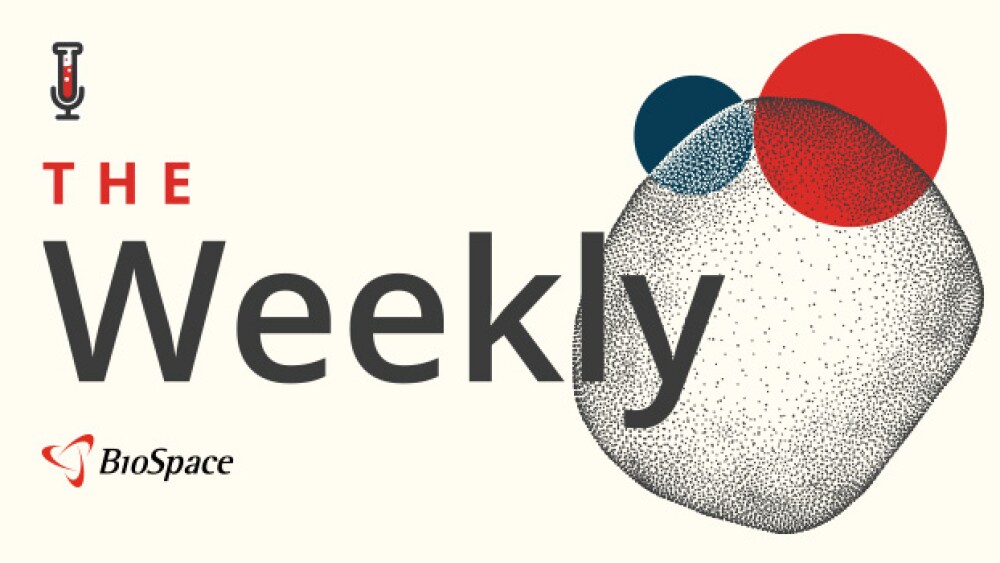ATLANTA, Feb. 23 /PRNewswire/ -- UCB today announced key results of a Phase III study (RAPID 1) involving nearly 1,000 patients on CIMZIA(TM) (certolizumab pegol), the first PEGylated, Fc-free anti-TNF, intended for the treatment of moderate to severe rheumatoid arthritis (RA). RAPID 1's radiographic data showed that CIMZIA(TM) in combination with methotrexate prevented structural damage of the joints to a significantly greater degree than placebo plus methotrexate after one year of treatment.
RAPID 1 achieved its co-primary endpoint, the inhibition of progression of structural damage, with a statistically significantly smaller change from baseline in modified Total Sharp Score (mTSS)(a) observed at week 52 in both CIMZIA(TM) treatment arms (400mg at week zero, week two and week four followed by 200mg every two weeks; or 400mg every two weeks) compared with the placebo treated arm (p<0.001).
The study also showed that in both active treatment arms CIMZIA(TM) improved the signs and symptoms of RA to a statistically greater degree than the placebo arm in patients who had inadequately responded to methotrexate alone (p<0.001).
Similar results were observed with a second pivotal Phase III study of CIMZIA(TM) in RA, RAPID 2, using CIMZIA(TM)'s new subcutaneous liquid formulation.
In both RAPID 1 and RAPID 2, the primary endpoint, ACR 20 response(b) at 24 weeks, was significantly higher in both CIMZIA(TM) treated arms than in the placebo treated arm (p<0.001). In both studies there was no significant difference between response levels in either of the CIMZIA(TM) treatment arms. ACR 50 and ACR 70 responses were also both achieved with statistical significance in both studies.
RAPID 1 and RAPID 2 demonstrated that effective results in the treatment of RA can be achieved with a 400mg total monthly dose of CIMZIA(TM) -- a higher dose is not necessary.
"These results are significant. They showed, for the first time, that the Fc region present in conventional anti-TNFs is not required for activity in rheumatoid arthritis," commented Professor Edward Keystone, Professor of Medicine, University of Toronto, Canada. "These data confirm that certolizumab pegol may provide a valuable new treatment option for patients with this condition."
The data from the RAPID studies demonstrate that CIMZIA(TM) also had a rapid onset of action: approximately three-quarters of actively-treated patients who achieved ACR 20 at week 24, actually reached ACR 20 within four weeks.
"The RAPID 1 and 2 studies showed consistent and robust efficacy with both the lyophilized and liquid formulations of certolizumab pegol," added Professor Joseph Smolen, Chairman of the Department of Rheumatology, Medical University of Vienna, Austria. "Interestingly, both studies show that maximal response can be achieved as early as 12 to 16 weeks."
The safety and tolerability profile of CIMZIA(TM) in both studies was consistent with that expected of an anti-TNF agent.
Further data from both RAPID 1 and RAPID 2 will be presented at major international rheumatology congresses later this year. A submission is planned in the U.S. for the treatment of RA during the second half of 2007.
Notes to the Editor
RAPID Clinical Trials Program
The RAPID series of clinical trials are designed to establish the efficacy and tolerability of CIMZIA(TM) (certolizumab pegol) in the treatment of rheumatoid arthritis. The RAPID clinical trial program is composed of two large, international, multi-center placebo-controlled studies -- RAPID 1 (027) and RAPID 2 (050).
In the 52-week RAPID 1, 992 patients were randomly allocated to receive one of three treatment regimens:
- 397 patients received 400mg lyophilized CIMZIA(TM) at the start of the study and at weeks two and four, then 200mg given every two weeks, together with methotrexate; - 394 patients received 400mg lyophilized CIMZIA(TM) every two weeks, together with methotrexate; - 201 patients received placebo every two weeks, together with methotrexate. In all three arms of the study, the dose of methotrexate was 10mg per week or greater.
Co-primary endpoints for the study RAPID 1 were ACR 20 responder rate at week 24 and change from baseline in mTSS at week 52.
In the 24-week RAPID 2, 634 patients were randomly allocated to receive one of three treatment regimens:
- 252 patients received 400mg liquid CIMZIA(TM) at the start of the study and at weeks two and four, then 200mg given every two weeks, together with methotrexate; - 252 patients received 400mg liquid CIMZIA(TM) every two weeks, together with methotrexate; - 130 patients received placebo every two weeks, together with methotrexate. In all three arms of the study the dose of methotrexate was 10mg per week or greater.
Patients were assessed for improvement in signs and symptoms of RA. The primary endpoint for the study RAPID 2 was ACR 20 responder rate at week 24.
About Rheumatoid Arthritis
Rheumatoid arthritis (RA) is a progressive autoimmune disease which causes chronic inflammation of the joints. It is estimated that 5 million people suffer from RA globally,(3) with 0.3% to 1% of the population in industrialized countries suffering from RA.(4) Prevalence is not split evenly between genders, since women are three times more likely to be affected than men.(5)
Although it can affect people of all ages, the onset of RA usually occurs between 35-55.(6)
Symptoms of RA include joint stiffness, joint pain, inflammation of the affected areas and an associated reduction in mobility. These symptoms can be intermittent and vary in severity from patient to patient. In more severe cases RA can eventually lead to disability. RA patients are also at a higher risk of developing other conditions, in particular heart disease, stroke, infections, lung problems and osteoporosis.(7)
As there is currently no cure for RA, treatment goals center on disease management. Treatment is aimed at controlling disease progression, providing pain relief and reducing swelling, preventing joint damage and deformity and maintaining function of the affected joints to prevent disability.
Traditional treatments for RA include Nonsteroidal Anti-Inflammatory Drugs (NSAIDs), Corticosteroids and Disease Modifying Antirheumatic Drugs (DMARDs), with biological therapies a more recent addition to the list of treatment options. Anti-TNF (TNF-alpha; Tumour Necrosis Factor) therapies are specific types of monoclonal antibody (biological therapies) which have been approved for use in patients with RA. They may be given alone but are usually given in combination with methotrexate or another immunosuppressant. Anti-TNF therapies have proven to be effective treatments, with the potential to prevent joint damage. They work by inhibiting the action of TNF-alpha, an inflammatory mediator, either directly or indirectly responsible for damaging the joint.(7)
About CIMZIA(TM) (certolizumab pegol)
CIMZIA(TM) (certolizumab pegol) is an investigational drug product. CIMZIA(TM) is the first and only PEGylated anti-TNF (Tumour Necrosis Factor) antibody, and is being evaluated in RA at a dosing of once every two weeks and once every four weeks, via subcutaneous administration. CIMZIA(TM) retains the potency of the original antibody without the possible cytotoxicity mediated by the Fc portion present in conventional anti-TNFs.
CIMZIA(TM) has a high affinity for human TNF-alpha, selectively targeting TNF-alpha in inflamed tissue. Over the past decade, TNF-alpha has emerged as a major target of basic research and clinical investigation. This cytokine plays a key role in mediating pathological inflammation, and excess TNF-alpha production has been directly implicated in a wide variety of diseases.
UCB filed a Biologics License Application (BLA) with the Food and Drug Administration (FDA) for CIMZIA(TM) in the treatment of Crohn's disease on February 28, 2006 and on April 28, 2006 submitted a Marketing Authorization Application (MAA) to the European Medicines Agency (EMEA) for the same indication.
About UCB
UCB (www.ucb-group.com) is a leading global biopharmaceutical company dedicated to the research, development and commercialization of innovative pharmaceutical and biotechnology products in the fields of central nervous system disorders, allergy/respiratory diseases, immune and inflammatory disorders and oncology -- UCB focuses on securing a leading position in severe disease categories. Employing over 8,400 people in 40 countries, UCB achieved revenues of euro 2.3 billion in 2005. With worldwide headquarters located in Brussels, Belgium, UCB is listed on the Euronext Brussels Exchange.
(a) The mTSS (modified Total Sharp Score) assesses bone erosion and joint space narrowing measured by X-ray. A smaller change in mTSS reflects less progression of joint damage.(1) (b) ACR (American College of Rheumatology) response scores measure improvement in the tender and swollen joint count and also include assessment of the following five parameters: patient's global assessment, physician's global assessment, patient's assessment of pain, degree of disability, and level of acute-phase reactant. ACR20 is achieved when there is 20% improvement in the tender and swollen joint count as well as a 20% improvement in at least three of the five parameters. ACR50 & ACR70 are an extension of these criteria corresponding to a 50% and 70% improvement respectively.(2) References (1) Sharp JT, Lidsky MD, Collins LC, Moreland J. Methods of scoring the progression of radiologic changes in rheumatoid arthritis: Correlation of radiographic, clinical and laboratory abnormalities. Arthritis & Rheumatism , 1971, Vol. 14, No. 6 (2) American College of Rheumatology Subcommittee on Rheumatoid Arthritis Guidelines. Guidelines for the Management of Rheumatoid Arthritis 2002 update. Arthritis & Rheumatism, 2002 Vol. 46, No. 2 (3) Stakeholder Insight: Rheumatoid Arthritis, Biologics battle up the treatment algorithm, Data Monitor, 7 September 2006 (4) Woolf AD & Pfleger B, Burden of major musculoskeletal conditions: Bulletin of the World Health Organization 2003, 81 (9) (5) Panayi G What is RA? National Rheumatoid Arthritis Society, June 2006 (6) Hellier, J et al, HLA-DRB1 genes and patients with late onset rheumatoid arthritis, Annals of Rheumatic Disease, 2001;60:531-533 (7) Firestein G, Rheumatoid Arthritis, ACP Medicine WebMD Publishing, August 2004
UCB, Inc.CONTACT: Investor Relations, Jean-Christophe Donck, +32-2-559-9346,jc.donck@ucb-group.com, or Mareike Mohr, +32-2-559-9246,mareike.mohr@ucb-group.com, both of UCB, Inc.; or International Media,Garry Daniels, of UCB, Inc., +44-1753-777-116, garry.daniels@ucbgroup.com,or Richard Kenyon, of Fleishman-Hillard, +44-7831-569940,kenyonr@fleishmaneurope.com, for UCB, Inc.; or U.S. Media, Lisa Garman, ofUCB, Inc., +1-770-970-8569, lisa.garman@ucb-group.com
Web site: http://www.ucb-group.com/




